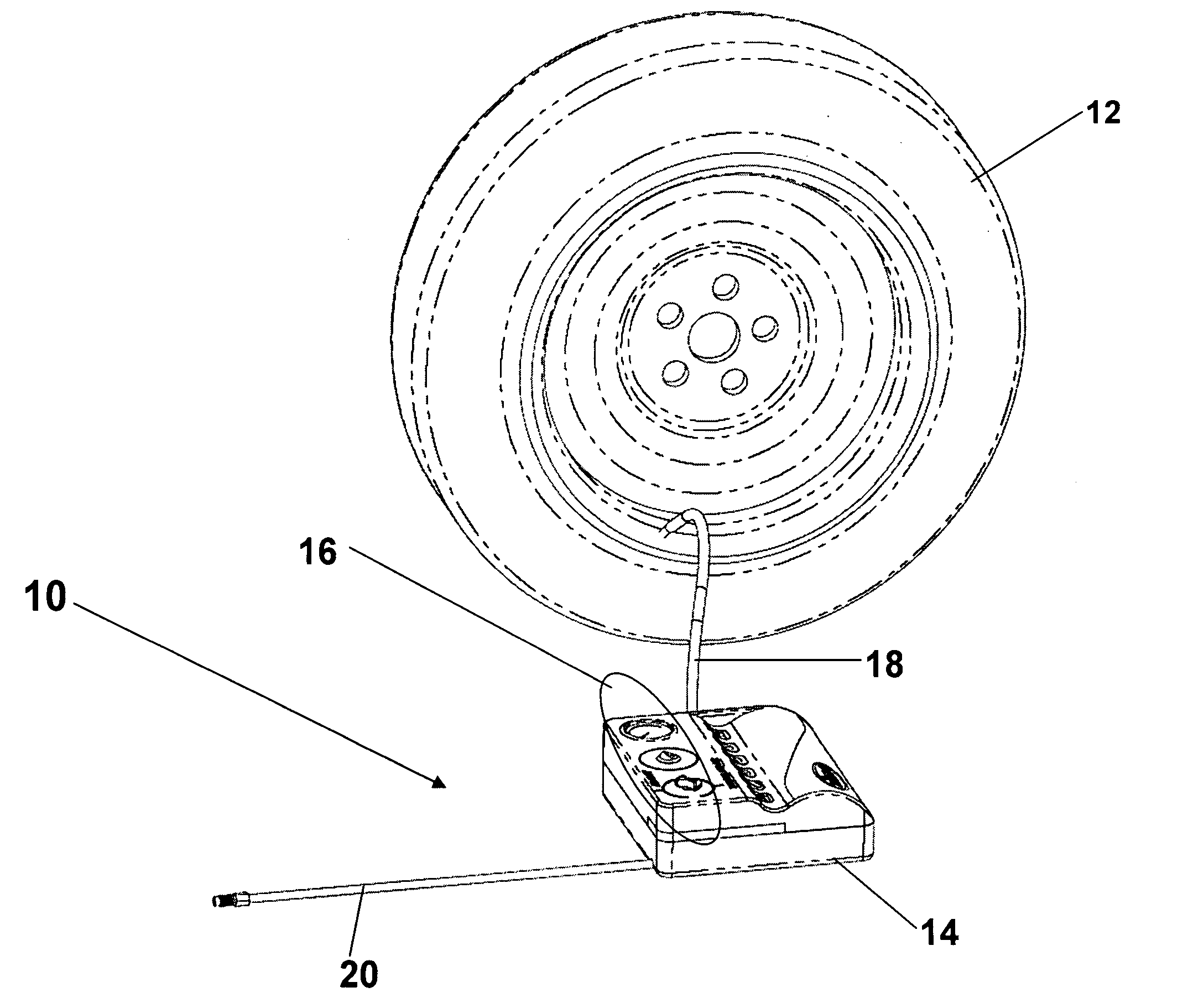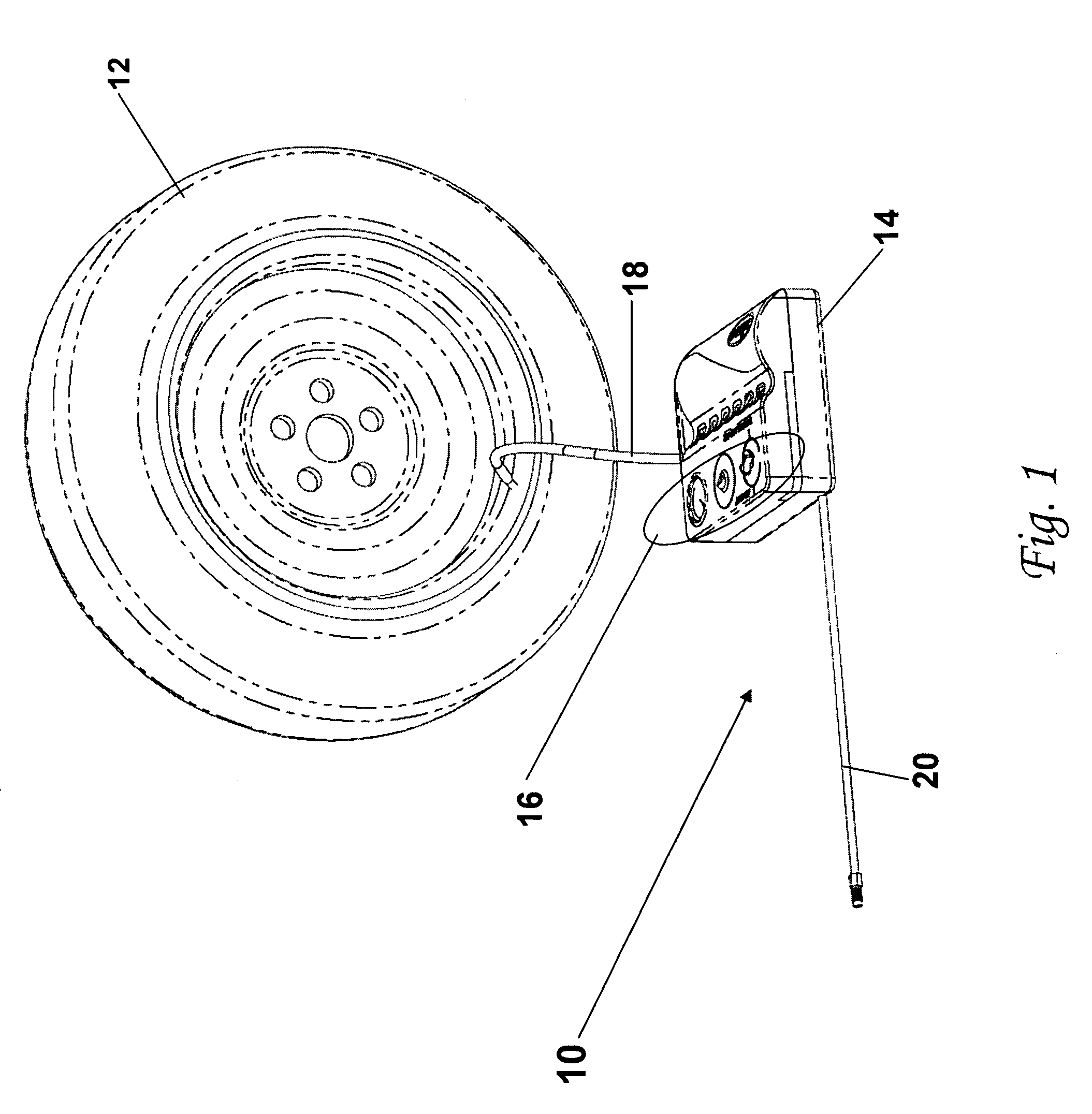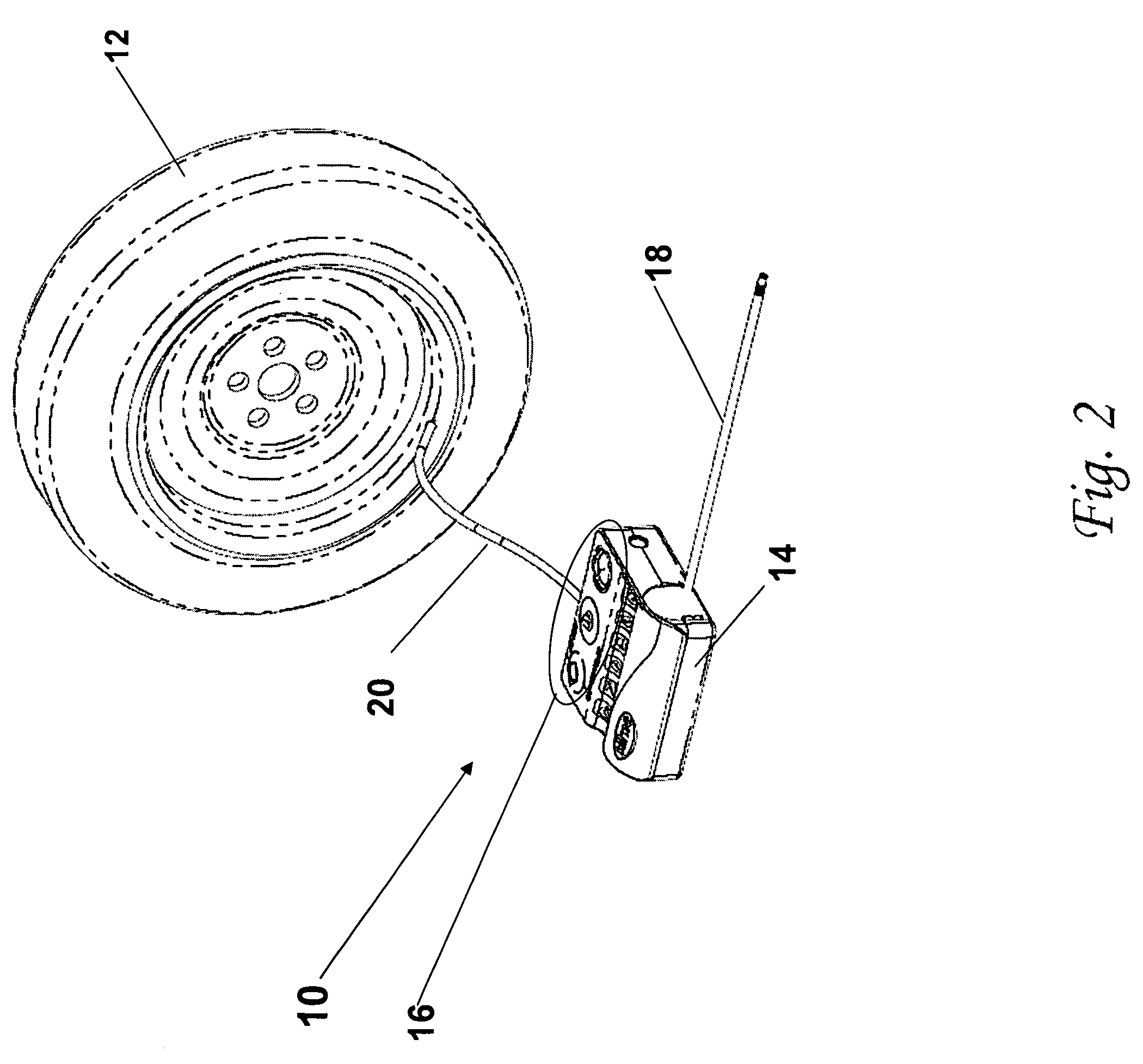Integrated compressor-tire sealant injection device with large mouth sealant container
a compressor and compressor technology, applied in the direction of liquid transfer devices, packaging goods types, liquid handling, etc., can solve the problems of increasing the cost of replacement, and introducing more problems and higher costs, so as to achieve more dispensing orientations.
- Summary
- Abstract
- Description
- Claims
- Application Information
AI Technical Summary
Benefits of technology
Problems solved by technology
Method used
Image
Examples
Embodiment Construction
[0034]The invention is particularly applicable to an integrated compressor device and storage container that may be used to inflate and / or repair an automobile tire and it is in this context that the invention will be described. It will be appreciated, however, that the device and storage container in accordance with the invention has greater utility since it may be used to inflate and / or repair any type of inflatable member, such as a bicycle tire, a motorcycle tire or any other type of inflatable member that a person might want to inflate and / or repair.
[0035]FIGS. 1 and 2 illustrate an integrated compressor device 10 in accordance with the invention being used to seal and / or inflate an object 12, such as an automobile tire. The device 10 may include a housing 14 that houses an gas compressor and a sealant container that contains a sealant that may be propelled into the inflatable object 12 in order to repair a puncture in the inflatable object 12. The preferred gas compressor is a...
PUM
| Property | Measurement | Unit |
|---|---|---|
| pressure | aaaaa | aaaaa |
| time | aaaaa | aaaaa |
| size | aaaaa | aaaaa |
Abstract
Description
Claims
Application Information
 Login to View More
Login to View More - R&D
- Intellectual Property
- Life Sciences
- Materials
- Tech Scout
- Unparalleled Data Quality
- Higher Quality Content
- 60% Fewer Hallucinations
Browse by: Latest US Patents, China's latest patents, Technical Efficacy Thesaurus, Application Domain, Technology Topic, Popular Technical Reports.
© 2025 PatSnap. All rights reserved.Legal|Privacy policy|Modern Slavery Act Transparency Statement|Sitemap|About US| Contact US: help@patsnap.com



